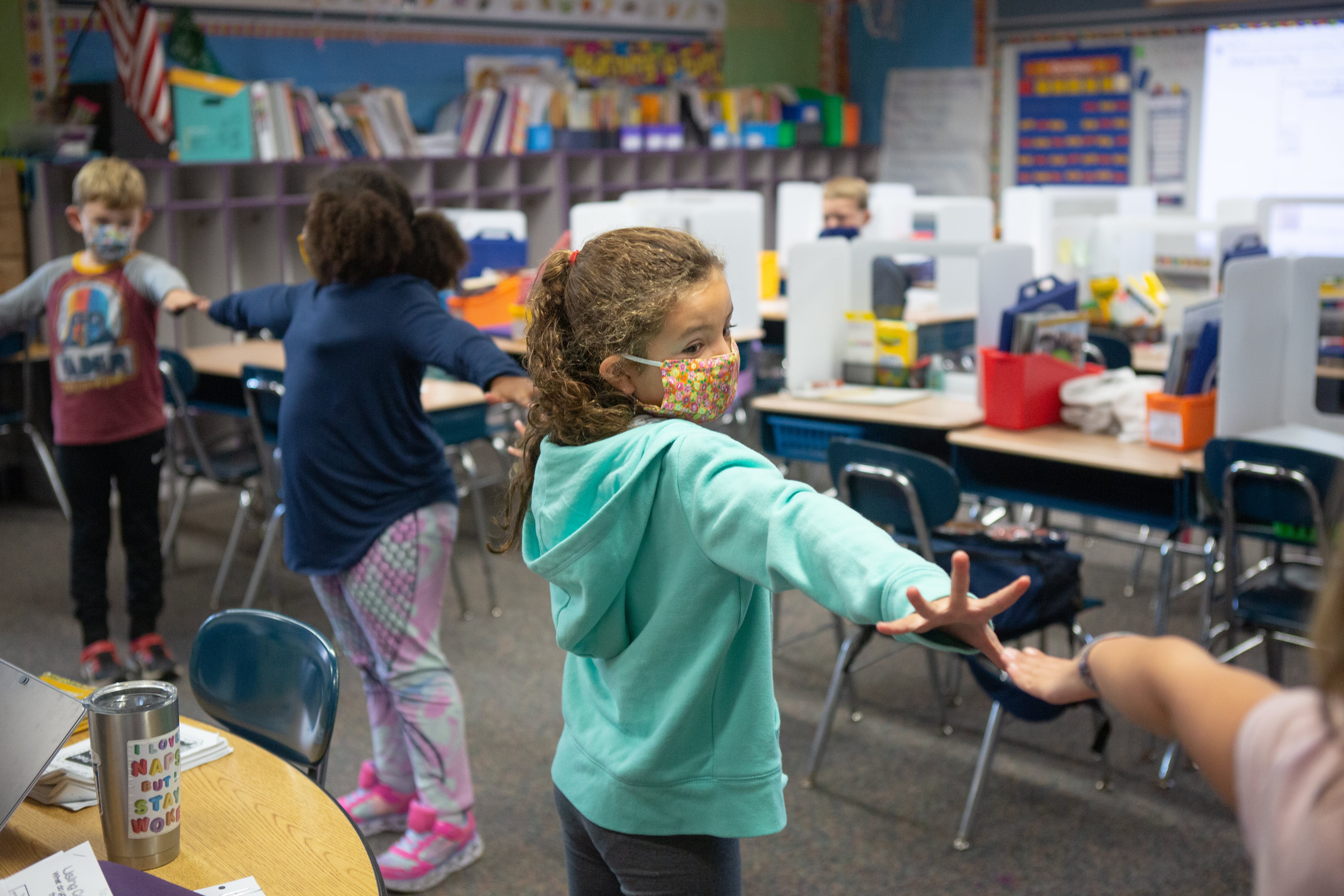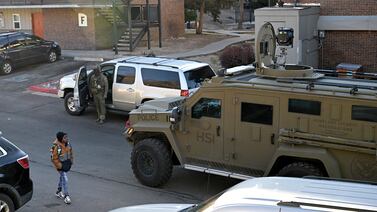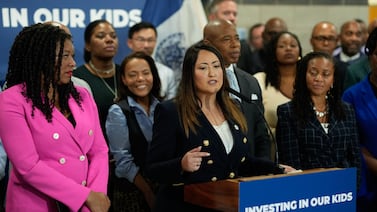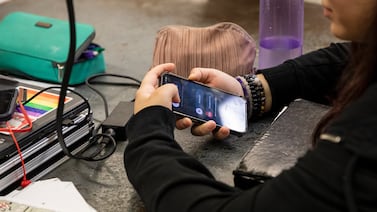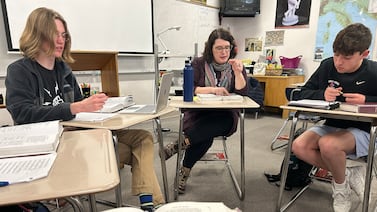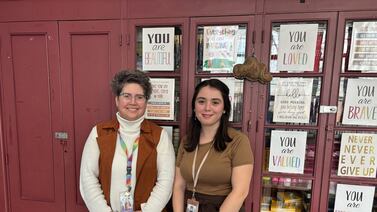As Colorado students return to school amid masking debates and varied vaccine rates, parents and staff are wondering how often students may be sent home for quarantine this year.
School district leaders have said for months that quarantines were one of the most disruptive parts of last school year. This year, quarantine guidance from the federal Centers for Disease Control and Prevention and the Colorado Department of Public Health and Environment is more relaxed and allows more students to stay in school after exposure to a positive case.
But those guidelines are just suggestions, and schools around the state are following a range of practices.
Even with the more relaxed guidelines, some classes and schools have had to switch to remote learning in the first weeks of school as cases rise. Quarantine rules are also contributing to the debate over masks in schools because students and staff who are wearing masks are less likely to need to quarantine.
The delta variant also raises new questions. Experts believe it is more contagious, and trends in Colorado and elsewhere show more children are getting sick, even though they remain a smaller percentage of hospitalizations.
Here’s what we know so far about how quarantines are working in Colorado schools this year:
What does CDC recommend regarding quarantines this year?
This summer, the Centers for Disease Control and Prevention adjusted its quarantine guidance to exempt vaccinated and, in some cases, masked students.
A student could be considered a close contact — meaning they may need to quarantine — if they spend more than 15 minutes over a 24-hour period within six feet of someone who tests positive.
But if both students were wearing masks and they were more than three feet apart in a classroom setting, they wouldn’t need to quarantine. Unvaccinated students who are within three feet of each other would still need to quarantine even if they were wearing masks.
And if the exposed student is vaccinated, then the exposed student doesn’t need to quarantine. Vaccinated students who have no symptoms should be referred to testing after an exposure and should wear a mask in the meantime, the CDC says.
Students who were diagnosed with COVID in the last 90 days also don’t need to quarantine after a new exposure, since they are assumed to still have some immunity.
CDC’s guidance recommends a quarantine period of 14 days, but allows for 10 or 7 days in certain conditions, while noting that may carry more risk of transmission.
Is Colorado’s guidance the same as CDC’s?
The Colorado Department of Public Health and Environment issued its guidance shortly after the CDC. While it follows many of the same principles, it provides more flexibility.
The state’s quarantine guidance states that quarantine is “not required for routine classroom exposures” but also notes that “important circulating variants may necessitate more stringent disease control strategies at the discretion of the local public health agency.”
Outbreaks, which are defined as five or more cases from different households in a two-week period, would call for stricter measures too.
This is a big change from last year, when anyone who was within six feet of an infected person — or everyone in the same classroom, in the case of elementary students — had to quarantine.
According to the state’s guidance, people who have had close contact with an infected person — even if the close contacts are unvaccinated — do not need to quarantine if any one of these circumstances apply:
- At least 70% of the population aged 12 and older has had at least one shot of a COVID vaccine. As of the last week of August, this applies to 19 Colorado counties, including Denver, Jefferson, Boulder, Douglas, Adams, Arapahoe, Larimer, Eagle, Summit, Routt, and Chaffee. Another 45 counties have lower vaccination rates, including El Paso, Weld, Pueblo, and Mesa.
- At least 70% of eligible students and staff in the school building have at least one shot. This information is not tracked at the state level.
- The county has fewer than 35 COVID cases per 100,000 population in the last week. As of the last week of August, this applied to only five counties, all sparsely populated.
- At least 70% of unvaccinated people in the school building undergo regular weekly COVID testing.
- The exposed person undergoes weekly COVID testing
- Both the infected person and the exposed people were wearing masks.
The Colorado Department of Public Health and Environment did not make anyone available for an interview. In an emailed statement, a department spokesperson said the guidelines were based on risks to the entire school community, including the risk of interrupting learning, rather than on individual risk.
“We must support and prioritize uninterrupted, full-time, in-person learning in all communities,” the statement says. “ ... Because in-person learning is essential for communities and students to thrive, CDPHE is recommending reduced incidents of quarantine in schools and child care specifically. Reduced quarantine is not recommended in other settings at this time.”
So, what are school districts doing?
Many school districts are generally following the state and federal guidelines when it comes to quarantines, but not all are — and they aren’t required to, at least for now.
A spokesperson said the state health department had put together evidence-based best practices that schools and local governments could implement cooperatively.
“The state recommends multiple ways schools can avoid quarantine for lower risk, typical classroom exposures, at the discretion of the local public health authority,” the spokesperson wrote.
The relationship between school districts and public health agencies isn’t always smooth.
Officials with the suburban Jeffco Public Schools system put the blame for broader quarantines on the local health department in a mid-August post about COVID protocols.
“Even though CDPHE School Guidance states school districts do not need to quarantine on an individual case scenario in a ‘normal’ classroom environment, [Jeffco Public Health] has indicated that they will not follow this guidance and will impose broader quarantines under independent legal authority,” the district said.
Christine Billings, head of the Office of Pandemic Response at Jeffco Public Health, said in an email that the department felt it was important to apply rules consistently in all indoor settings.
“There is nothing different from the virus’ perspective about walking through the doorway of a school compared to walking through any other doorway in Jefferson County,” she wrote. “An unmasked person identified as a close contact of a case would receive quarantine instructions if the indoor exposure happens at a meeting, an event, in a school, at a family gathering or at a sports practice.”
In District 49, a school district in the Colorado Springs area, officials criticized last year’s quarantine practices as “overzealous” and more harmful than the risks of the disease. For that reason, the district said it would not report positive cases to local public health authorities who would then use that information to determine if any close contacts would need to quarantine.
The district does not require masks, and community vaccination rates are below the 70% threshold, though CEO Peter Hilts said staff vaccination rates are high, one criteria for relaxed quarantine. Published guidance from El Paso County Public Health says that investigators will determine which close contacts need to quarantine.
At a recent press conference, Gov. Jared Polis said school districts can decide whether to enforce quarantine, though not whether to report positive cases. “We have the guidance,” he said. “It is up to school districts how to implement that.”
State health officials, though, said local health departments have the authority to require quarantines.
“Schools must work with their local public health agency when cases of COVID-19 are identified to determine quarantine requirements,” a CDPHE spokesperson said. “Both local and state public health have statutory, legal, and regulatory authority to investigate and control disease transmission, including isolation of cases and quarantine of close contacts, closing public places and prohibiting gathering to control the spread of disease.”
Polis has encouraged school districts to follow the reopening guidance that state experts put together, warning that if case rates get worse or too many schools close, the state could step in.
In Denver, the district requires masks for all staff and students, and the city requires vaccination for all staff. Because masked and vaccinated people won’t have to quarantine, officials expect far fewer disruptions this year.
In Aurora, the district recently announced that in the case of close contacts outside of the classroom, quarantines will be more likely.
“Quarantines will be required for unvaccinated students and staff who are exposed to positive cases during higher-risk extracurricular activities. This includes all athletics, field trips and after-school bands, choirs and performing arts groups,” the district states.
Pueblo County in southern Colorado, where vaccination rates are lower, started the school year with broader quarantine guidance than state rules require. After adopting a school mask requirement last week, the public health department issued new schools guidance that lays out 10 categories of exposure, each with its own protocol.
While vaccinated people generally don’t have to quarantine, unvaccinated people who are exposed during activities like sports or band are considered at higher risk. Unvaccinated people who are within six feet of a positive case without a mask or within three feet even with a mask are required to quarantine, but can return to school in fewer than 14 days if they test negative.
The Greeley-Evans district north of Denver is interpreting state guidance on its own, without direction from the Weld County health department. In general, people wearing masks don’t have to quarantine, unless there are special circumstances, like two children who carpool to school together. An unvaccinated person who spends time within three feet of a positive case without a mask is considered a close contact and has to quarantine.
So far, the district has more than two dozen groups in quarantine, and one charter school has switched to remote learning. That’s less disruptive than last year’s targeted quarantines, district spokeswoman Theresa Myers said in an email, and officials hope a new mask requirement, adopted last week, will reduce quarantines further. At the start of the school year, masks were just recommended.
Will schools offer continued learning during quarantine or will absences be excused?
It varies. Even at the national level, some school districts have a plan to let students learn remotely and others aren’t sharing much information.
In Aurora, school district officials talked about the need to offer students a way to keep learning during quarantine as one reason to keep virtual options. Its flex model, which allows students to tune into an in-person class from home, will be used for students in quarantine.
In Greeley, quarantined students can also participate in their regular classes remotely, while quarantined teachers teach from home while another adult monitors their class.
Jeffco’s guidance specifies that students on quarantine will have excused absences, but will continue learning through either assignments posted online or packets that families pick up from school. The district’s remote learning option this year is centralized.
Correction: This story has been updated to more accurately describe CDC quarantine guidance. The CDC recommends unvaccinated students who are wearing masks don’t need to quarantine if they are more than three feet apart in a classroom setting but should still quarantine if they were within three feet of someone who tested positive.

